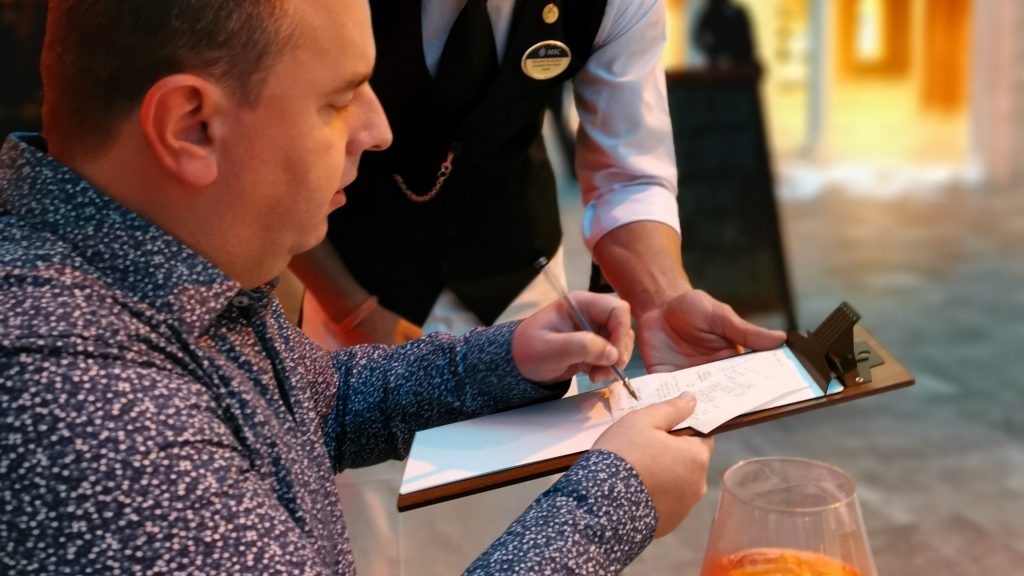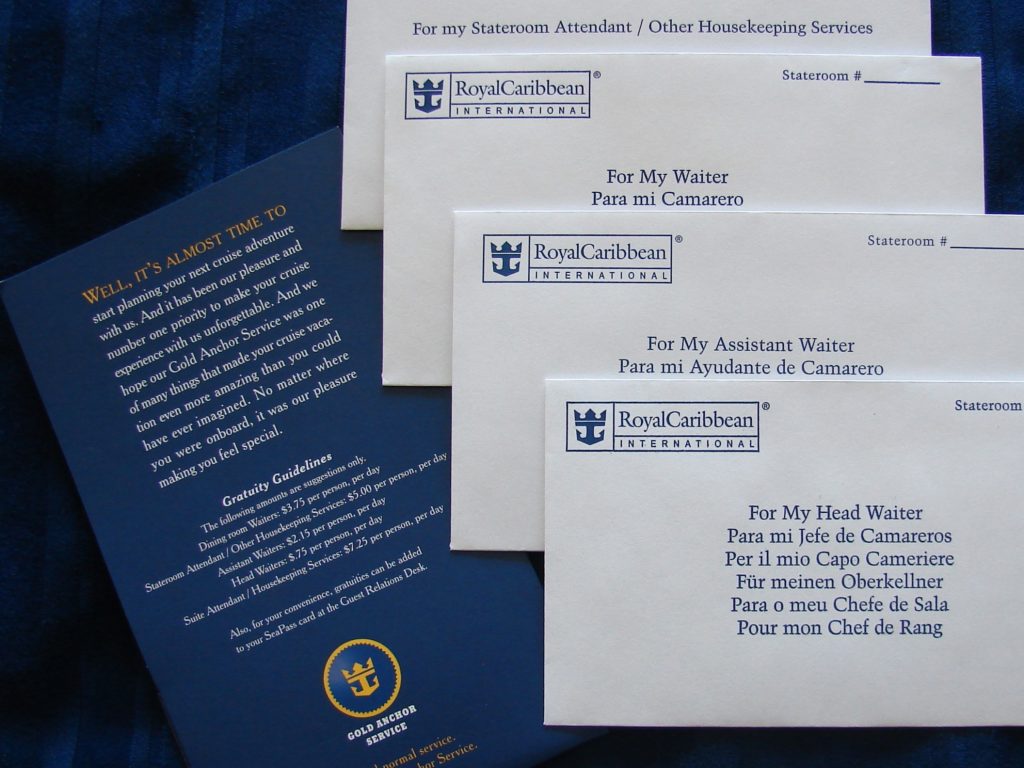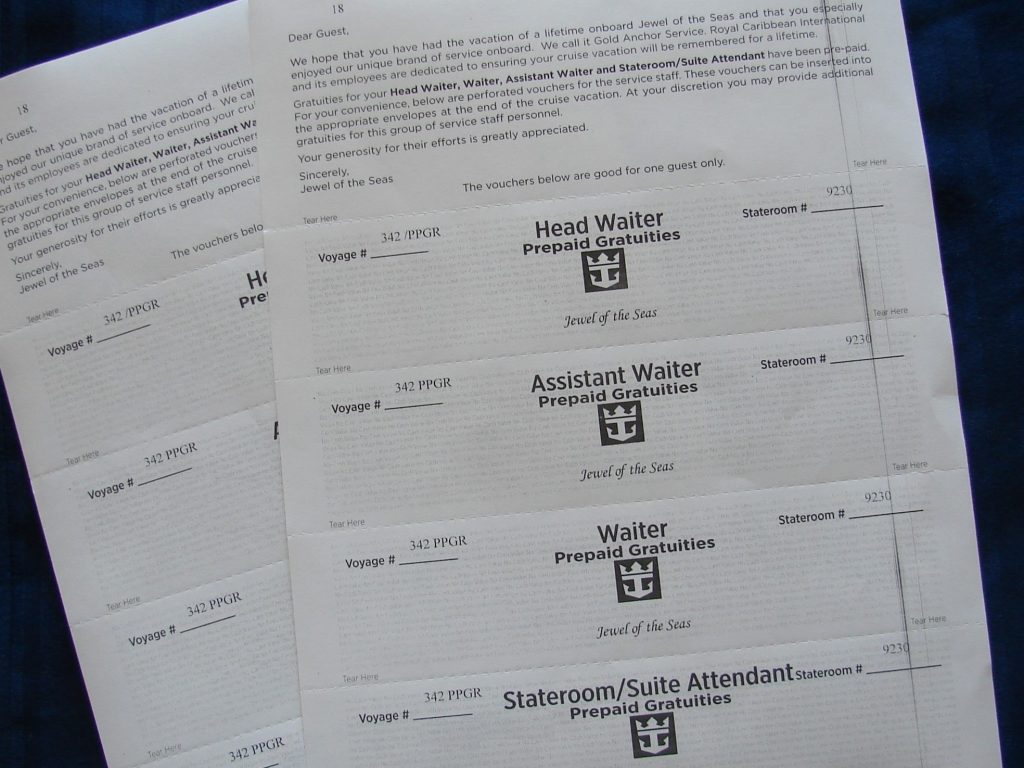
Cruising offers a luxurious escape, complete with breathtaking views, indulgent amenities, and a sense of adventure. However, for many (first-time) cruisers the hidden costs associated with cruising can come as an unexpected shock, potentially altering the perceived affordability of this seemingly all-inclusive vacation.
In the cruise industry, crew members often work long hours, away from their families for extended periods, to ensure passengers have a memorable and enjoyable experience. Gratuities or crew appreciation are a way for passengers to show their appreciation for the tireless efforts of the crew, ranging from housekeeping and dining staff to entertainment and maintenance personnel.
Crew members greatly depend on gratuities as a significant part of their income. While salaries are provided, gratuities can significantly enhance the overall compensation for many staff members. This additional income can be particularly crucial for those in lower-paying positions or those who rely on tips to supplement their wages.
Gratuities also create a positive feedback loop, fostering a culture of excellence and attentive service on board. Crew members are motivated to go above and beyond to ensure passenger satisfaction, as their earnings are directly tied to the level of service they provide.
Gratuities play a pivotal role in the cruise industry, serving as a means of expressing gratitude and recognition for the hard work and dedication of the ship’s staff.
Cruise lines typically provide guidelines for gratuity amounts, either as a daily per-person rate or as a total amount for the entire voyage. Passengers can choose to prepay gratuities when booking their cruise or opt to settle the amount at the end of the journey. The distribution of gratuities varies among cruise lines, with some evenly distributing the funds among all crew members and others allocating them based on job roles and levels of responsibility.


While originally tipping crew members was done through cash tipping, these days cruise lines automatically add gratuities to the bill. The cruise lines say they have introduced this system to make life easier for passengers as they no longer need to bring extra cash or need to calculate how much tip to give each crew member.
The automatic addition of these charges however may lead some passengers to overlook the significance of crew appreciation and devalue the personal touch associated with tipping. Passengers may also feel less inclined to recognize outstanding service, knowing that a predetermined amount is automatically factored into their final bill.
The true cost of cruising
While most people recognise the importance of crew appreciation, the fact that gratuities are often not explicitly included in the upfront cost of the cruise package can create an illusion of a lower price point. Cruise lines can advertise seemingly competitive rates, drawing in customers with the promise of an affordable vacation.
The practice of concealing gratuities within the overall cost of a cruise may contribute to the perception of an artificially lower price.
Indeed, at first glance, the additional fees may appear negligible – a few dollars per day, per person. However, as the days at sea accumulate, so do the charges.
In fact, these charges can escalate to as much as $25 per day. And, unlike traditional service fees or resort charges applicable to an entire room, these fees are charged per person. As a result, on Norwegian Cruise Line for example, a family of four sharing a standard cabin will encounter a daily service fee of $80. For a seven-night cruise this translates to $560 in gratuities.
The price of daily gratuities
Gratuities are based on stateroom category and industry standards but vary across cruise lines. Gratuities are charged per person, per day.
- Carnival Cruise Line – $16 for standard staterooms, $18 for suites
- Celebrity Cruises – $18 for standard staterooms, $18.50 for Concierge and AquaClass, $23 for The Retreat
- Costa Cruises – €11 in Europe, $12.50 in the US
- Cunard – $14.50 for Britannia staterooms, $16.50 for Grill Suites
- Disney Cruise Line – $14.50 for standard staterooms, $15.50 for concierge staterooms and suites (recommended)
- Holland America Line – $17 for non-suite stateroom guests, $ 19 for suite guests
- MSC Cruises – €12 in Europe, $14.5 South America, $16 Canada, Caribbean & US cruises
- Norwegian Cruise Line – $20 for standard staterooms, $25 for suites and The Haven
- Princess Cruises – $16 for standard staterooms, $17 for mini-suites and Reserve Collection, $18 for suites
- Royal Caribbean International – $18 for non-suites and Junior Suites, $20.50 for suites
- Star Clippers: €8 (recommended)
- Viking – $20
- Windstar Cruises– $16
While gratuities are a longstanding practice in the cruise industry, in recent years, more and more cruise lines have integrated gratuities into their basic fares. The following cruise lines have gratuities included in the fare: Aida, Azamara, Celestyal Cruises, Crystal, Hapag-Lloyd Cruises, Lindblad Expeditions, Oceania Cruises, Paul Gaugin Cruises, Ponant, P&O Cruises, Regent Seven Seas Cruises, Scenic, Seabourn, Seadream Yacht Club, Silversea, TUI Cruises and Virgin Voyages.
While these cruise lines do not automatically add gratuities, guests can always add additional tips at their own discretion.